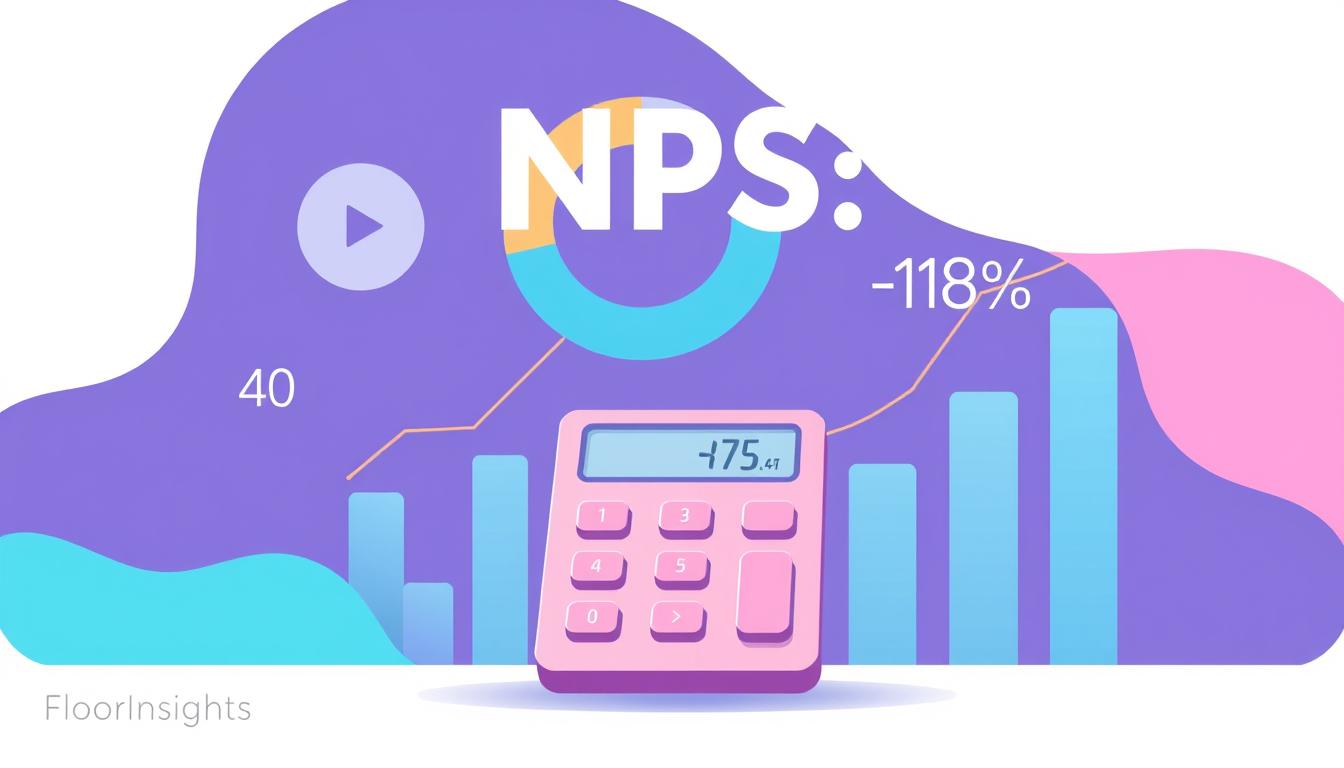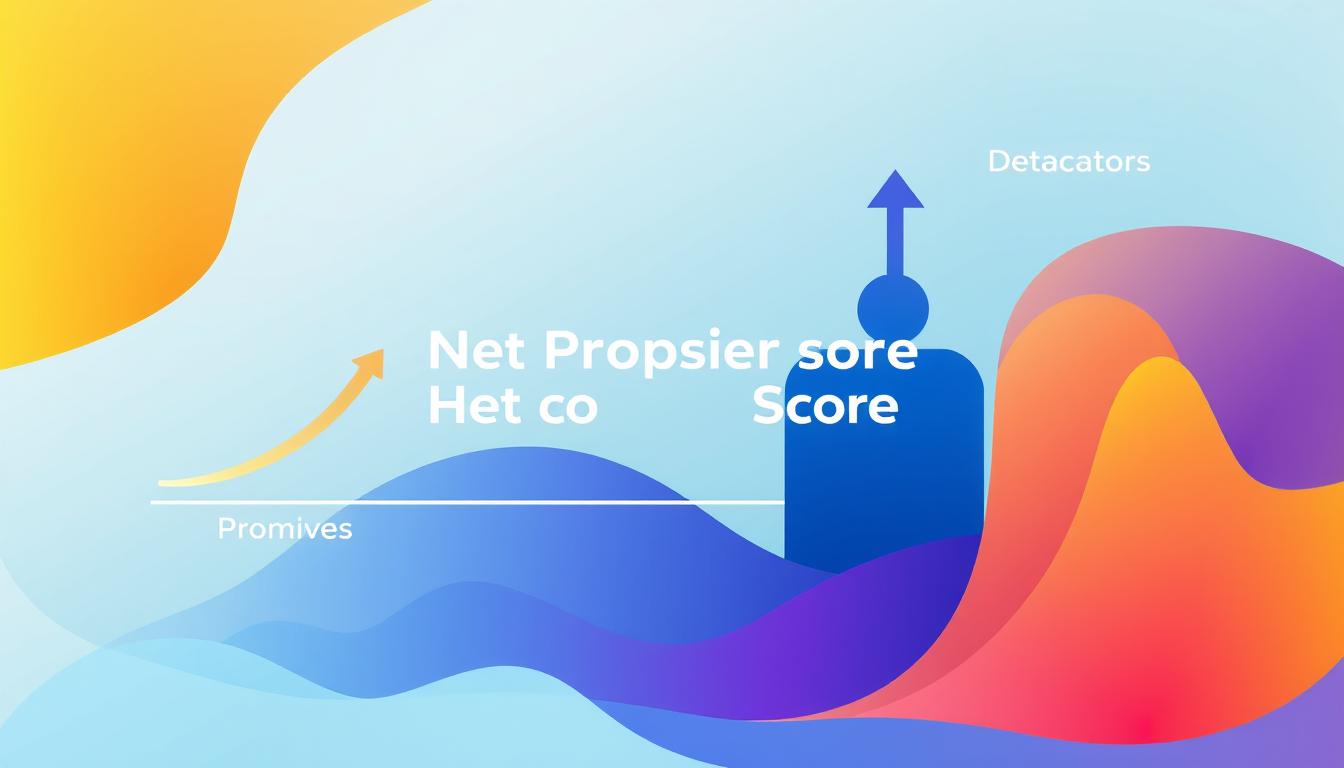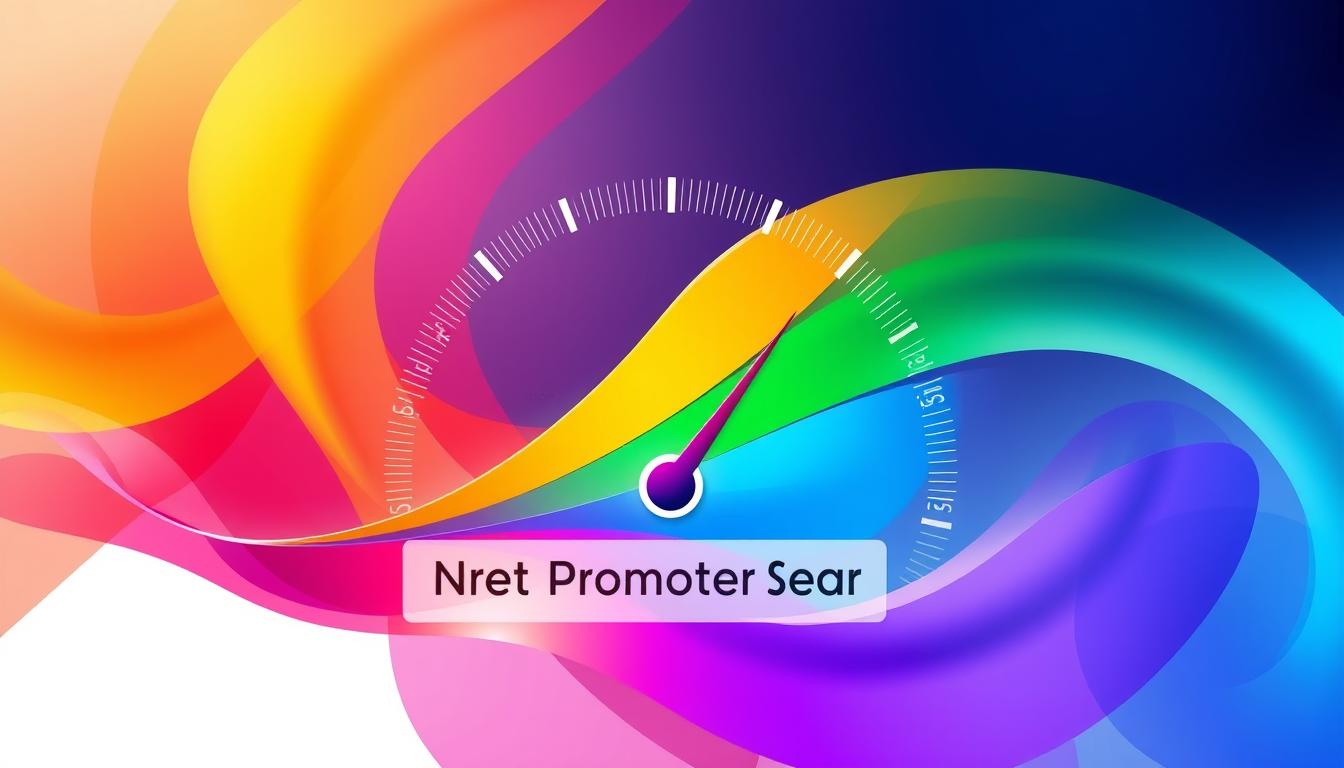The in-store experience in retail has dramatically transformed over the years, largely owing to metrics such as the Net Promoter Score (NPS). In our exploration of NPS in retail, we will highlight its significant role in enhancing customer satisfaction and fostering loyalty among shoppers. By understanding how NPS metrics are integrated into store strategies, we can see the evolution of the shopping experience across Indian retail landscapes, emphasizing a customer-centric approach that takes into account real-time feedback.
Key Takeaways
- NPS significantly influences customer experience in retail environments.
- Adopting an NPS survey platform can yield valuable insights into customer sentiment.
- Customer loyalty is enhanced through effective implementation of NPS strategies.
- Retailers can revolutionize in-store experiences by focusing on customer feedback.
- Understanding NPS metrics fosters a stronger emphasis on customer satisfaction.
Understanding the Concept of NPS in Retail
The Net Promoter Score (NPS) serves as a crucial management tool for businesses aiming to assess customer loyalty and satisfaction. By categorizing customers into three distinct groups—Promoters, Passives, and Detractors—we gain valuable insights into how our audience perceives our brand. This customer loyalty measurement provides clarity on areas requiring improvement and strengths worthy of amplification.
The NPS framework empowers retailers to capture real-time insights, which is vital in today’s competitive marketplace. With a clear understanding of net promoter score meaning, we can implement tailored strategies that resonate deeply with our customers, particularly in the Indian market. By prioritizing customer feedback, businesses can enhance their in-store experiences and build lasting relationships with their clientele.
The Importance of Customer Satisfaction in Retail
Customer satisfaction represents a critical element in the overall success of retail businesses. Understanding the connection between customer experience and retail performance allows us to create an environment that fosters loyalty and encourages repeat purchases. Satisfied customers are more likely to return to our stores, which can significantly impact our bottom line.
Incorporating customer satisfaction metrics, such as the Net Promoter Score (NPS), gives us valuable insights into how customers perceive our brand. The NPS advantage lies in its ability to measure customer loyalty effectively. By evaluating feedback through NPS, we can identify areas in need of improvement, thus enhancing our services and offerings to meet customer expectations more efficiently.
High customer satisfaction not only boosts our reputation but also leads to organic growth through referrals. When customers share positive experiences, they help attract new clientele, reinforcing our position in the competitive retail landscape. Addressing customer satisfaction metrics is vital for any retailer aiming to thrive in the market.
Net Promoter Score: The Key Metric for Retail Success
Understanding the Net Promoter Score (NPS) provides valuable insights into customer loyalty and satisfaction. This metric is a cornerstone for analyzing and enhancing retail strategies. It not only quantifies customer sentiment but also helps predict future business growth, making it indispensable for retailers.
Defining the Net Promoter Score
The net promoter score survey is an effective tool for gauging customer loyalty. By asking customers how likely they are to recommend our business on a scale of 0 to 10, we can categorize our respondents into three distinct groups: Promoters, Passives, and Detractors. To calculate NPS, we subtract the percentage of Detractors from the percentage of Promoters. This straightforward calculation yields a comprehensive view of customer loyalty.
How NPS Helps Measure Customer Loyalty
A high NPS signifies a robust customer base willing to advocate for our brand. This loyalty metric reflects the overall sentiment towards our offerings, emphasizing the importance of delivering an exceptional in-store experience. By employing NPS, we gain a predictive tool that enables us to forecast future growth, ultimately reinforcing our position in the competitive retail landscape.
Implementing an NPS Survey Platform
To capture valuable insights from customers, we need to prioritize selecting the appropriate net promoter score software. A good platform must offer user-friendly features and robust integration with our existing systems. Various options such as SurveyMonkey and Qualtrics stand out in the market, each providing distinct advantages catered to different business needs. By carefully evaluating these options, we can enhance our survey effectiveness and data collection capabilities.
Choosing the Right NPS Software
The effectiveness of our NPS strategy largely hinges on the software we choose. Here are some critical factors to consider when selecting the right net promoter score software:
- Ease of Use – The interface should be intuitive for both survey creators and respondents.
- Integration – The software must seamlessly integrate with our CRM and other analytical tools.
- Customization – It should allow for tailored questions that align with our specific objectives.
- Analytics Capabilities – Advanced reporting features help us derive meaningful insights from responses.
- Support – Reliable customer support can enhance our experience in using the software.
Strategies for Effective Survey Distribution
Once we have the right net promoter score software in place, we must focus on how we distribute our surveys. Implementing best practices NPS survey distribution strategies will significantly enhance response rates. Consider the following methods:
- Email Campaigns – Sending surveys through targeted email lists can reach specific segments of our customer base.
- Social Media Outreach – Engaging customers on social media platforms increases visibility and participation.
- In-Store Digital Kiosks – Placing kiosks in-store can attract immediate feedback after a shopping experience.
- Post-Purchase Timing – Timing surveys right after a purchase allows us to gauge customer satisfaction accurately.
Using these strategies, we can enhance our NPS survey responses, leading to more accurate insights into our customer experiences. Adopting a thoughtful approach to survey distribution ultimately aids in strengthening our connection with customers and refining our service offerings.
Measuring In-Store Experiences with NPS
Measuring the in-store customer experience through NPS analysis provides invaluable insights into our retail operations. We can capture direct customer feedback about their shopping journeys, enabling us to understand their perspectives on various aspects of service and environment. An effective retail environment assessment allows us to pinpoint the strengths that delight our customers as well as the weaknesses that may lead to dissatisfaction.
Utilizing NPS analysis, we can categorize feedback into actionable insights. For instance, comments related to product availability or staff interactions can lead us to enhance operational efficiencies. This direct feedback creates opportunities for us to craft tailored experiences that resonate better with our customer base, ultimately fostering greater loyalty and satisfaction.

By conducting a thorough NPS analysis regularly, we can build a responsive feedback loop. Here’s a structured look at how leveraging NPS data can impact our strategies:
| Aspect | Positive Feedback | Negative Feedback | Action Steps |
|---|---|---|---|
| Product Availability | Customers appreciate a wide selection. | Common complaints about out-of-stock items. | Improve inventory management systems. |
| Staff Assistance | Shoppers value friendly and knowledgeable staff. | Some report unhelpful or absent employees. | Enhance training programs and staff engagement. |
| Store Layout | Many find the layout intuitive and easy to navigate. | Confusion about product placements noted by some. | Conduct a thorough layout review based on user flow. |
By consistently measuring in-store experiences through NPS, we can adjust our business practices to better meet our customers’ needs. This ongoing analysis serves not just as a metric but as a roadmap for elevating the in-store customer experience.
Leveraging Customer Feedback for Improvement
In today’s retail environment, understanding and acting on customer feedback is crucial for success. We can tap into invaluable customer insights through NPS feedback utilization, enabling us to refine our operations effectively. By focusing on this feedback, we can identify specific improvement strategies that lead to enhanced customer satisfaction and loyalty.
Utilizing Data from NPS Surveys
Mining insights from NPS surveys allows us to highlight key areas for enhancement. By analyzing patterns in customer responses, we gain a deeper understanding of their expectations and preferences. This information can guide our efforts in product development, service adjustments, and overall customer experience.
Catering to Customer Needs Based on Feedback
Acting on customer feedback fosters loyalty and satisfaction. Implementing changes based on real-time suggestions from NPS responses enables us to meet customer needs proactively. Such responsiveness not only improves our retail outcomes but also creates a more engaged and satisfied customer base.
Impact of NPS on Employee Engagement in Retail
Engaged employees significantly enhance our ability to provide exceptional customer experiences. A strong connection exists between employee engagement metrics and Net Promoter Score (NPS). In fact, NPS scores not only showcase customer satisfaction levels but can also serve as a mirror reflecting the engagement of our staff. When we assess how employees understand and perceive the customer experience, we gain insights that can guide improvements in internal processes and boost motivation within the retail workforce.
Understanding the NPS influence on staff helps us define the relationship between employee engagement and overall company performance. Teams that feel valued and motivated are more likely to contribute positively, leading to higher NPS results over time. Employees who recognize their role in enhancing customer satisfaction tend to be more dedicated, influencing not just their performance but also that of their colleagues.
A motivated retail workforce can translate NPS insights into actionable strategies. By addressing employee concerns and fostering an encouraging workplace culture, we can improve retention rates and enhance overall productivity. It is important to create an environment where team members feel empowered to share their feedback and ideas, ultimately strengthening our retail operation.
| Employee Engagement Initiative | Expected Outcome | Impact on NPS |
|---|---|---|
| Regular Pulse Surveys | Gather insights on employee satisfaction | Increased scores as employees feel heard |
| Recognition Programs | Boost morale and motivation | Positive influence on customer interactions |
| Training and Development | Enhance skills and knowledge | Higher engagement leads to better service |
| Open Communication Channels | Encourage feedback and discussions | Higher trust within teams leads to improved performance |
Ultimately, understanding how to leverage NPS to enhance employee engagement can create a ripple effect throughout our retail environment. As we focus on retail workforce motivation, we recognize that a satisfied employee base is integral to achieving high customer satisfaction ratings. This interconnection highlights the value of investing in our staff, aligning their goals with overall business objectives for mutual benefit.
Innovations and Trends in the In-Store Experience
As we navigate through the rapidly changing retail landscape, embracing retail innovation proves essential for meeting evolving consumer expectations. Retailers are increasingly leveraging in-store technology to create immersive and personalized shopping experiences. Innovations such as augmented reality are revolutionizing how customers interact with products, allowing them to visualize items in their own space before making a purchase.
Another exciting trend involves the implementation of AI-driven customer service tools. These advancements help improve responsiveness and provide tailored support, enhancing the overall customer experience. This streamlining of services not only drives customer satisfaction but elevates our Net Promoter Score (NPS), reinforcing our commitment to continuous improvement.
We face an exciting period ahead filled with diverse innovations. Key developments include:
- Seamless checkout processes through mobile apps and smart technology.
- Personalized in-store experiences based on shopper behavior and preferences.
- Interactive displays that engage customers and provide valuable product information.
With these customer experience advancements at the forefront, we can anticipate a shift toward more engaging, efficient, and satisfying retail experiences for our customers. Retailers dedicated to incorporating these innovations stand to benefit greatly, establishing themselves as leaders in the industry.
Calculating NPS for Improved Business Strategies
Calculating the Net Promoter Score (NPS) provides us with essential insights into customer sentiments, facilitating effective business strategy optimization. The most efficient NPS calculation methods involve gathering feedback through surveys that segment responses by demographics and purchase history. This segmentation is vital.
Once we collect and analyze NPS data, we can effectively evaluate NPS results, allowing us to tailor our strategies. By understanding the drivers of customer loyalty and satisfaction, we can enhance our operational capabilities to better meet market demands.
Integrating NPS findings into our decision-making processes can lead to improved customer experiences. We recognize that aligning our business strategies with customer feedback is a critical step towards fostering loyalty and driving growth.
| Demographic Segmentation | NPS Score | Customer Loyalty Insights |
|---|---|---|
| Age 18-24 | 75 | High engagement with promotions |
| Age 25-34 | 60 | Preference for product quality |
| Age 35-44 | 50 | Focus on customer service |
| Age 45+ | 65 | Value loyalty programs |
Utilizing these insights aids us in creating effective strategies that resonate with various customer segments. The combined approach of precise NPS calculation and thorough evaluation can propel our business towards sustained success in retail.
Case Studies: Success Stories in Retail Using NPS
Examining NPS case studies provides us with valuable insights into how retail giants have successfully navigated the challenges of customer engagement and satisfaction. For instance, companies like Amazon have implemented NPS strategically to gather essential feedback, refining their operational practices and enhancing the customer service experience. This direct line of communication with customers leads to more informed decision-making in product development and service offerings.
Tata, another exceptional example, utilizes NPS to derive actionable insights that reflect their customers’ sentiments. By analyzing feedback, they can identify pain points and streamline processes, ensuring that customer expectations are met consistently. Such successful NPS implementation demonstrates the power of being attuned to customer needs.
These examples highlight several retail best practices showcased in the industry, such as:
- Integrating customer feedback into product design and service improvement.
- Creating an open channel for ongoing communication with customers.
- Regularly reviewing NPS data to track progress and adapt strategies.
Retailers can draw inspiration from these success stories, applying similar NPS methodologies to enhance customer satisfaction and retention. The impact on overall business performance can be significant, changing the way companies interact with their customer base.
| Company | Strategy Implemented | Outcome |
|---|---|---|
| Amazon | Customer feedback integration | Improved operational efficiency |
| Tata | Ongoing feedback analysis | Enhanced customer satisfaction |
| Walmart | Employee feedback loop with NPS | Greater employee engagement and sales growth |
Conclusion
In summary, adapting to the dynamics of customer expectations is vital for retail success. The net promoter score significance cannot be overstated, as it serves not only as a metric but also as a guiding principle for developing a customer-centric retail strategy. By understanding and applying NPS insights, we can create in-store experiences that meet and exceed customer expectations.
As we strive to foster brand loyalty and sustainable growth in India’s evolving retail landscape, leveraging the net promoter score becomes essential. By continuously measuring our performance and enhancing our offerings based on customer feedback, we set a robust foundation for the future of retail experiences. This proactive approach allows us to remain relevant and competitive in a rapidly changing market.
Ultimately, our commitment to a customer-centric retail strategy, driven by NPS insights, will empower us to navigate challenges and seize opportunities. Embracing these changes will ensure that we not only meet the needs of our customers but also shape the future of retail experiences for generations to come.
FAQ
What is the Net Promoter Score (NPS) and how is it calculated?
The Net Promoter Score (NPS) measures customer loyalty and satisfaction by asking respondents how likely they are to recommend our business on a scale of 0 to 10. To calculate NPS, we subtract the percentage of Detractors (scores 0-6) from the percentage of Promoters (scores 9-10). This results in a score that can range from -100 to +100.
How can we use an NPS survey platform to enhance customer experience?
Utilizing an NPS survey platform allows us to gather valuable insights directly from customers about their experiences with our brand. This data helps identify strengths and areas for improvement in our service and product offerings, ultimately enhancing the customer experience and driving loyalty.
What benefits does measuring NPS offer for retail businesses?
Measuring NPS provides critical insights into customer satisfaction and loyalty, allowing us to identify engaged customers and address the concerns of detractors. This not only helps improve retail performance but also strengthens brand reputation, driving repeat purchases and word-of-mouth referrals.
What are the most effective strategies for distributing NPS surveys in retail?
To achieve high response rates, we can employ several strategies, including leveraging email campaigns, utilizing social media platforms, and engaging customers through in-store digital kiosks. Timing surveys shortly after a purchase can also yield more accurate insights into the customer experience.
How does customer feedback from NPS surveys inform our business strategies?
Customer feedback collected through NPS surveys provides us with actionable insights that highlight specific areas for improvement. By analyzing this feedback, we can make informed decisions regarding product enhancements and service modifications, ensuring our strategies align with customer expectations.
Can NPS also impact employee engagement within our retail organization?
Yes, NPS can serve as an indicator of employee engagement levels. Understanding how our staff perceives the customer experience can drive initiatives to improve internal processes and cultivate a motivating work environment, which can, in turn, enhance customer interactions.
How do we ensure the reliability of a chosen NPS software?
To select a reliable NPS software, we should evaluate various platforms based on their features, user-friendliness, data analysis capabilities, and compatibility with existing systems. Popular options available in the market include SurveyMonkey and Qualtrics, both renowned for their effectiveness.
What innovations should we consider to improve the in-store experience and NPS scores?
Embracing innovations such as augmented reality, personalized shopping experiences, and AI-driven customer service can greatly enhance the in-store experience. These advancements cater to modern consumer expectations and are likely to have a positive impact on our NPS scores.
How can we analyze NPS data effectively to drive improvements?
Analyzing NPS data involves segmenting responses by factors like demographics and purchase history. This detailed approach allows us to identify trends, customer sentiments, and areas needing improvement, helping us tailor our business strategies for greater effectiveness and relevance.
What role do case studies play in implementing NPS effectively in retail?
Case studies of successful NPS implementations, such as those by companies like Amazon and Tata, showcase best practices we can learn from. Analyzing these examples helps inform our approaches and strategies, leading to improved customer experiences and higher retention rates.






